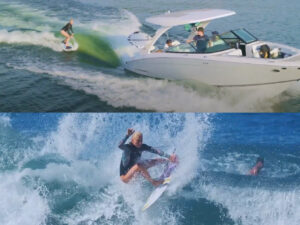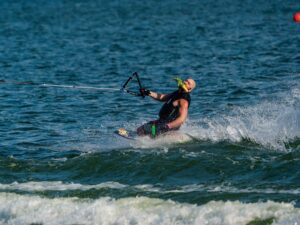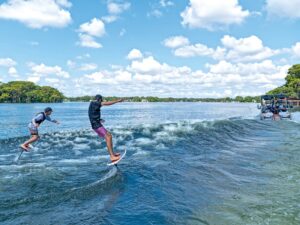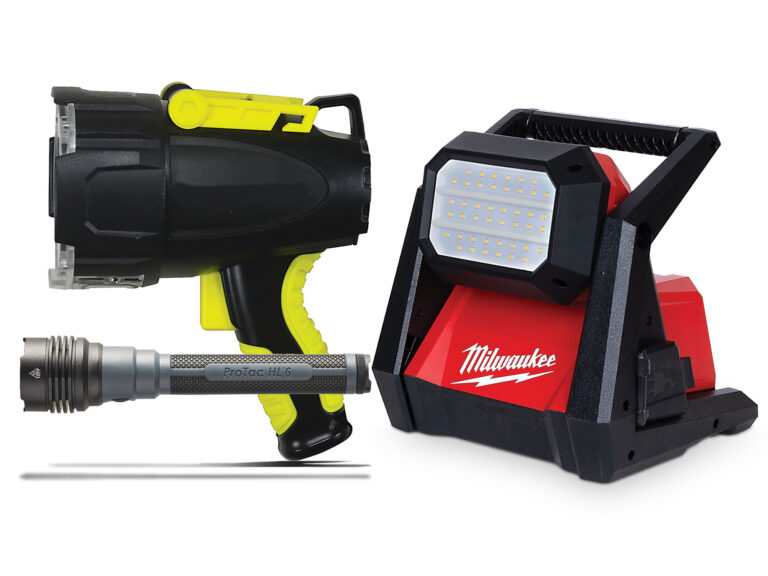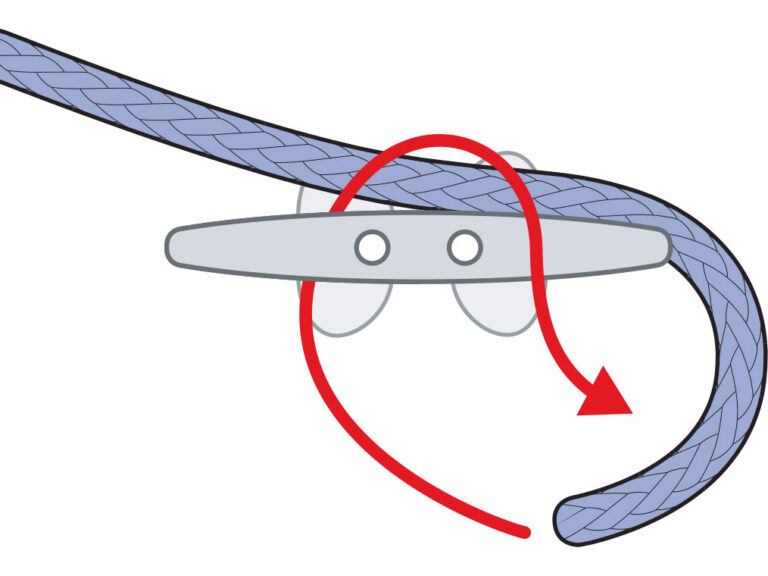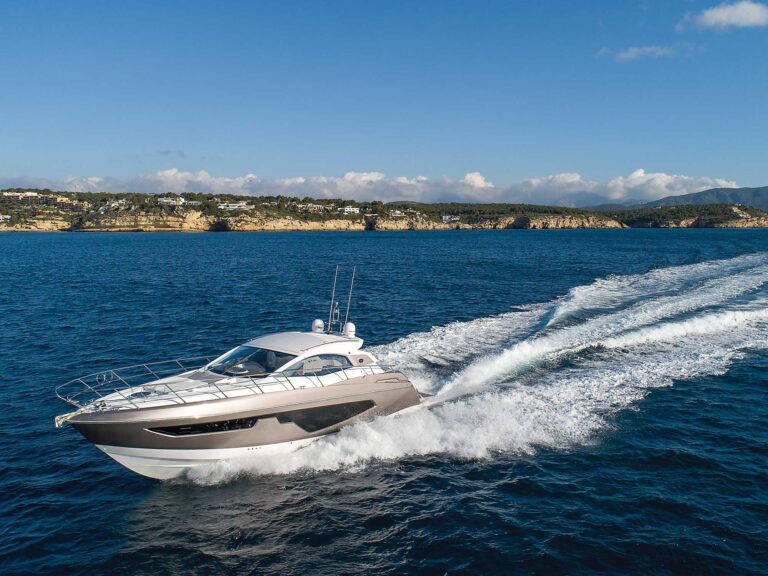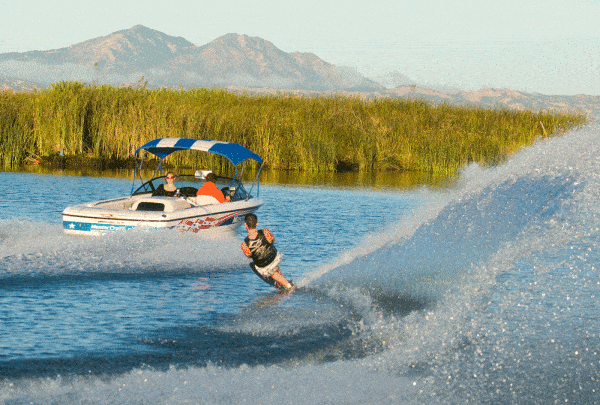
You’re not into tournaments, and you aren’t after a national ranking.
Most weekends, you and the gang would rather find a quiet cove and play with the skis, boards and tubes. But even though you don’t chase buoys or keep score, there’s still a competitive element to your skiing. Admit it. Wouldn’t you like to be the one who earns the oohs and ahs each time you take to the water? Wouldn’t it be great to pump out huge walls of spray, make fluid transitions and generate amazing angle when crossing the wakes? Deep down, don’t you want to be the “slalom master” of your lake?
If you are serious about becoming a skilled slalom performer, you’ll need more than a vague desire to outshine your buddies. What you need is a step-by-step plan that builds foundational skills, then allows you to combine those skills into a seamless, flawless slalom technique. To help you become the master of your skiing domain, slalom coach Gordon Rathbun has developed a series of simple exercises, each designed to create and reinforce one or more of the fundamentals of slalom skiing.
As with most sports, the key to these exercises lies in regular practice. Devote several days a week to practicing these drills and you should see dramatic improvements in your slalom performance within a couple of weeks. Keep at it through the summer and you might just become the best skier on the lake before the leaves turn.
Step One:
Before you make that first slalom turn or cut, spend some time developing a solid slalom foundation. By creating and maintaining the correct stance and body position, you will be able to translate the relentless pull of the boat into the regular pattern of acceleration, deceleration and turning that are the heart of a slalom run.
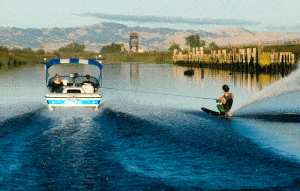
In this position, your weight should be distributed evenly over the ski. 50/50 on each leg with your knees and ankles having a slight forward bend. Your shoulders should be back, arms down, chest up and eyes focused on the horizon rather than down at the water. Begin your practice session by riding
Step Two:
Lean to the side of the boat, using the boat to generate speed. The object of this exercise is to teach you how to get the ski on edge and how to use body position to create the leverage needed to turn the forward pull of the boat into angular motion. Practice this drill on both sides of the boat.
Start by pulling out from the wakes, then holding that position. Make sure that your chest is up, your shoulders are back and your knees have a slight forward flex. Hold this position until it begins to feel comfortable. This is the position that will eventually drive your ski through the wakes.
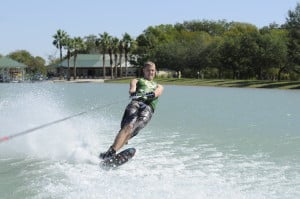
Step Three:
Before you can begin a slalom run, you must first free yourself from the pull of the boat and buy the time needed to make the transition into your first cut. The pull-out drill helps you build the momentum needed to get wide of the boat and into position to coast.
Start the pull from just outside the wake, making sure you are in a strong stance. Lean over to put the ski on edge. The key here is not to stay on the pull or lean too long or you will end up going too slow and lose the ability to coast free from the pull of the boat. Hold a progressively harder edge until you are well outside the wake. During the pull, make sure your hips are forward and your arms are down and close to the body.
By mastering a smooth, progressive pull out, you will generate enough speed to flatten the ski and coast. In the beginning of your coast, you will be going a few mph faster than the boat. While coasting, be sure to maintain a 50/50 weight distribution. At the end of the coast it’s better to have more weight on the front foot. If you’re standing correctly on the ski, the water should break at the toes of your front foot at the end of your coast. As the ski decelerates to the speed of the boat, you’ll be ready for the lean-in drill.
Step Four:
This drill incorporates the first three elements of the run – the pull out, the coast and the lean in – and adds crossing the wakes. After completing the pull, coast and lean-in and establishing angle across the wakes, simply hold that strong body position through the wakes, with arms straight and down at the body. Rather than attempting to turn after crossing the second wake, repeat the coast-and-lean sequence.
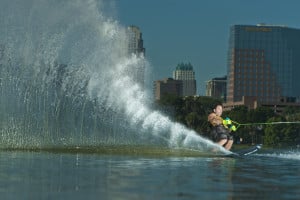
This drill deserves a lot of attention, because crossing the wakes is the most difficult aspect of slalom skiing. If you’re afraid of the wakes, it’s okay for now, but don’t look at them or that will make your wake crossing worse. It’s even okay to let up at the wakes until you gradually build up the confidence to cross them properly.
Step Five:
Once you have mastered the pull out and coast, you are ready for the third phase of the transition into the first cut. The lean in should be initiated as the ski slows to the boat’s speed.To start the lean in, rotate your body in toward the wakes, stand upright with your elbows at your vest and use your whole body to generate ski angle behind the boat. By maintaining proper body position, you will be able to translate the forward pull of the boat into angular acceleration toward the wakes, but it’s not necessary to cross the wakes yet.
Make the Transition Into a Progressive Pull This drill is done from your coasting position. The object is to learn how to create a smooth transition into the pull. The smoother you can make this transition, the better chance you will have of keeping the ski on edge through both wakes.
Step Six:
After crossing the center of the wakes, the boat will try to pull the handle and your arms away from your body. As the ski makes the transitions from your leaning edge to turning edge, make sure you use your shoulders to keep your direction going outward, while keeping the handle in close to the body as the ski makes its arc and you make a smooth controlled release of the handle.
Step Seven:
A good way to reinforce the various elements of your slalom technique is to practice on land. Hook the slalom handle to an immovable object and visualize each component of the slalom run. Dry-land practice allows you to isolate problem areas and focus on corrections without the added distractions of being on the water.
Step Eight:
Free skiing links all the individual slalom drills together and is the reward for all of your practice. Work toward linking pulls and turns into a smooth rhythm, remembering that it is better to complete a series of slower, smoother turns rather than setting a tiring, overly aggressive pace that you can’t maintain. Remember: The more you ski, the better you’ll get.

